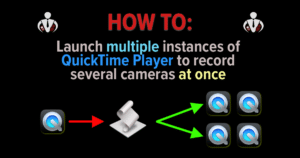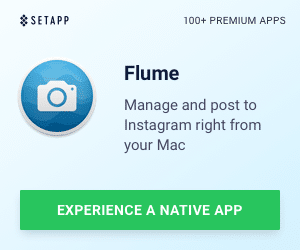One of the most difficult things being a content producer is, duh, producing content. Whether you are under a deadline, asked to write about something that you aren’t passionate about, or your content creation engine is simply stale, getting inspiration to write about something…anything…can be like getting blood from a stone. Content writing should be inspired, otherwise you risk coming across as forcing your writing. And your audience is savvy to this.
Content, whether in the form of writing, photos, videos, or what-have-you, is what fuels social media. Social media allows for content sharing, audience development and engagement, discussion, feedback (even negatively), and subsequent idea generation. Content cannot exist without this. But if your content is not compelling, doesn’t tell a story, lacks substance or is simply boring to your audience, you might want to avoid sharing it, or at least, re-work it.
The worst thing you can do is just write to have a bunch of words on a screen or piece of paper. Many so-called content “gurus” or “rock stars” make their living by churning out written words laden with keywords or SEO-optimized phrases. While this does potentially accomplish something, by gaming ranking within search engine results for example, if you read these articles, they sometimes lack compelling substance – something that sparks and idea or reaction from the reader. Don’t get me wrong, there definitely IS a place for this type of content within a business’s content and social strategy, but it shouldn’t be the sole source of content.
A good content creation strategy should have a balance of content types, whether it is visual or written. Also, it obviously depends on the business type. A consumer brand’s content strategy is extremely different from a B2B’s strategy. But the over-arching strategy should involve a mixture of content that evokes reaction, is true to the brand and a company’s UVP (unique value proposition), and that develops the “voice” of the company, brand or individual.
This is where the “don’t force it” comes into play.
Content Creation & Social Media Strategies – “Don’t Force It!”
If you or your content team are struggling with a particular piece of content, you can’t articulate clearly the reason for producing (or sharing) the content, or if the content is evoking yawns from the initial set of content consumers (e.g., an internal team), you may want to rethink it (or re-do it).
- Lacks authenticity – When you force a tweet, or write something that you don’t feel passionate about, you are demonstrating that you just don’t care. Good content is authentic.
- Takes too long – If your ideas are churning around as you try to articulate them, they probably haven’t been fully thought through. When inspiration hits, run with it. Content comes faster when you are inspired.
- No engagement – When people engage with your content (e.g., leaving comments, liking, or sharing via social media), it means that you have sparked something within them, so much so they have taken extra time to engage. Forced content typically doesn’t have too much engagement. But if your content isn’t being engaged with, don’t worry. A good content strategy may be simply building an audience or developing thought leadership, which often comes over time. While it is often nice (and expected) to get instant gratification via social engagement, being successful with content production should not be limited to a single piece of content, viral or not.
- Trust & Transparency – When you force content to be shared or created, you can potentially alienate your audience. There has been a trend of producing sponsored content on high-visibility/volume sites that appears like news articles. This blurring of journalism versus brand-sponsored content (and even content marketing versus brand journalism) is potentially confusing to your audience. While this type of content may be good for a particular brand, it can erode the trust of the site hosting the sponsored content, especially if it isn’t clearly spelled out that it is “sponsored.”
- Doing it to just “do it” – Content calendars are great. They can articulate and provide an overarching theme to drive sales or grow an audience. Having a regular cadence of mixed content shows that your business is alive, thinking and iterating. But if you live too close to the mantra of “we have to get something out now” instead of thinking it through and producing compelling content, you will appear to be padding the content engine and providing just “fluff.”
- Copy-cats – If your competitors are employing a particular social or content strategy, observe how it performs before immediately trying to copy it. What works for them, may not work for you. If, however, you tend to lead the trend, definitely do experiment, but pay close attention on how your experiments perform and re-tool, refine or dump those strategies quickly and run with those that work.
- Trust your gut – When your gut or that little voice inside tells you something, go with it. That’s inspiration talking!
Content creation is tricky to do well. You must know what your audience wants and what creates a reaction. Knowing when and how to share, also, is just as critical as what you produce to share. And remember, with social media, don’t just share your own stuff. That is one-sided. There are incredible content producers out there, and any social media strategy, whether it is for an individual or a business, should involve the sharing of content that is relevant to your audience. It shows your focus — that you are listening, reading and watching, and, most importantly, thinking.

Sharing or producing content just to do it, as I said, is a mistake. If you or your business is doing only that, perhaps it is time to rethink your strategy. But, DON’T be afraid of the content production process. If you get “writers block,” which can also affect social media, approach the problem from a different angle. Time can help the thought-process.
Case in point. I had the idea for this article bouncing around my head for several weeks. I kept thinking about it and reworking it. When I eventually thought that it was worthy to publish and share with my audience and I started writing, it flowed.
Do you ever force content or social sharing? I admit, I have. Learning restraint and understanding what you are trying to accomplish are critical to any content or social media strategy.
HTD says: When it comes to content creation or social media strategies, how do you know when you are “forcing it?” Be sure to leave a comment!









